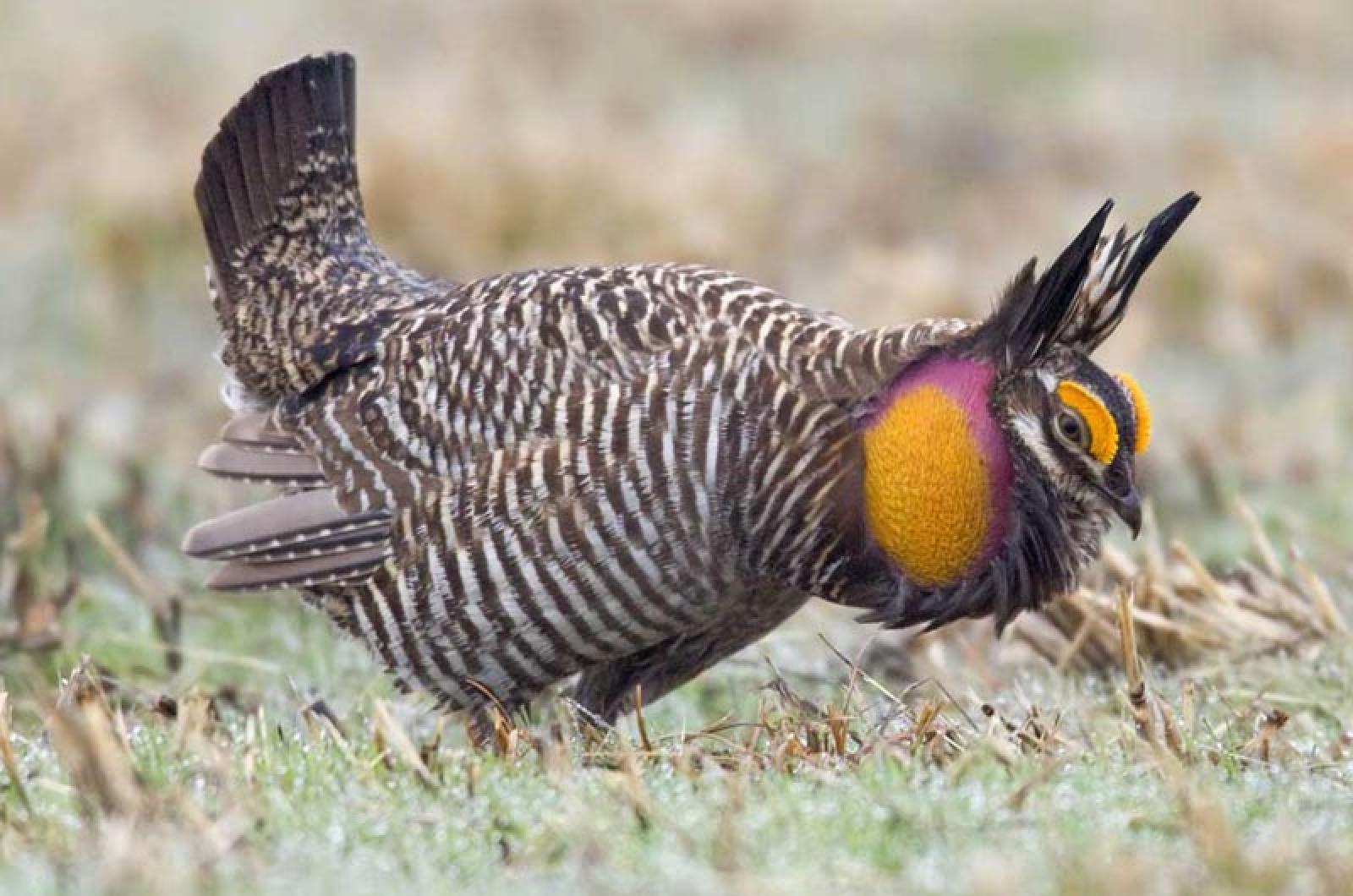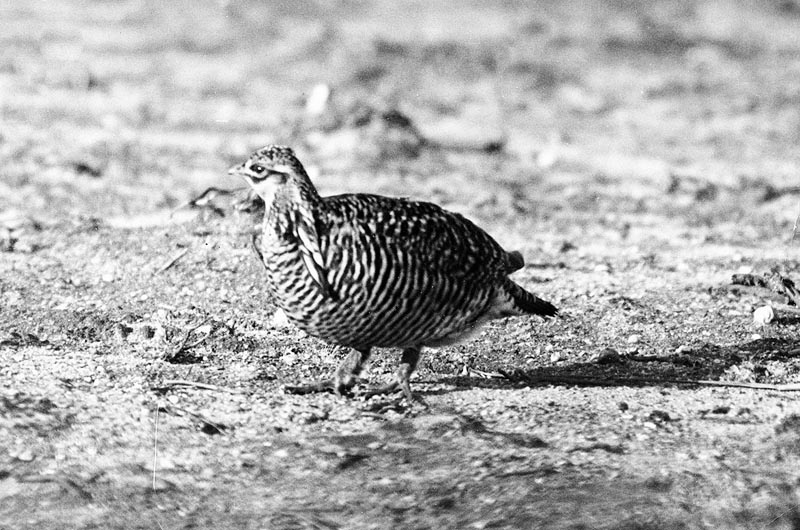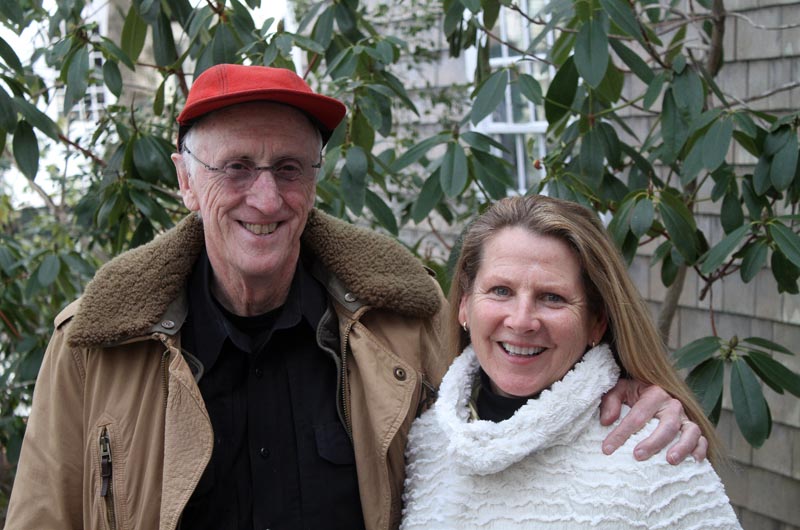A complex and groundbreaking project that aims to bring back the heath hen is advancing “at lightning speed,” scientists said this week.
The small bird that is a member of the grouse family went extinct more than 80 years ago when the last known male died on Martha’s Vineyard.
Now, using DNA plucked from the toes of heath hen specimens in Canada and Chicago, DNA samples from a greater prairie chicken from the plains of Nebraska and funding from donors with Vineyard ties, a team of scientists from around the country hopes to complete the first phase of the heath hen de-extinction project by early summer.
Even if the effort falls short of its end goal — to bring the heath hen back into existence — scientists involved said the quest to bring back a long-lost bird could help existing bird species.
“This has opened up the idea whereby we might approach many species,” said Tom Chase, a Vineyard conservationist who is a key advisor for the project. “It’s probably not just a Vineyard, heath hen thing anymore. It’s probably much bigger than that.”
The rapid speed at which the work has advanced, the strength of the team working on the project, “and the technological frontiers I see ahead of us may mean that this is going to be a much more important project,” he said.
“Even if nothing comes to the Vineyard, in a way it doesn’t matter much. I think the science is already very exciting.”
About a year ago, Ryan Phelan and Stewart Brand visited the Vineyard with what they called a big idea: bringing the heath hen back from extinction.
Ms. Phelan and Mr. Brand are the co-founders of Revive & Restore, an organization that provides support for projects using genetic technology to revive extinct or nearly-extinct species. Their list of candidates for de-extinction includes the woolly mammoth, the passenger pigeon and the heath hen.
The heath hen is what brought Mr. Brand and Ms. Phelan to the Vineyard. The bird, about the size of a chicken and whose call was said to sound “like the blowing in the neck of a bottle,” was once abundant throughout the eastern United States. By the late 1800s the birds existed only on Martha’s Vineyard. The Vineyard population, protected and closely watched, slowly dwindled, depleted by inbreeding, hunting, predators and forest fires. The last heath hen, a male named Booming Ben, was last seen in 1932. Soon after, heath hens were declared extinct.
With rapid advances in genomic engineering and genome sequencing, Revive & Restore aims to continue a story many thought was over. Genetic technology, they say, allows for accurate and complete genomes to be constructed for the heath hen and closely related species. Using state-of the-art science, a related species could potentially be genetically manipulated to lay heath hen eggs.
Ms. Phelan and Mr. Brand hosted a panel discussion about the idea last July on the Vineyard to measure community interest. Stemming from that event, Ms. Phelan said, a group of five founding donors with Vineyard connections came forward to donate the $50,000 needed for the first phase of the project, a genomic study of the heath hen and related species.
The donors are Peter and Gwen Norton, Warren Adams, the G. Kenneth Baum and Ann Baum Philanthropic Fund, the Betsy and Jesse Fink Foundation, and Brad Palmer.
A volunteer team of 16 scientists, ornithologists and ecologists from around the country are on board and well into the genetic work that comprises the first stage of the project. The goal is to find out if the heath hen was a distinct species, and what species is its closest relative.
The pace of the project has been quick. “If we are successful in being on time it’ll probably be the fastest genome study on record,” said Jeff Johnson, an associate professor at the University of North Texas who is serving as project coordinator for the genomic study.
Over the Christmas holidays, John Toepfer, a biologist who “lives and breathes greater prairie chicken,” Mr. Johnson said, acquired a female greater prairie chicken in Nebraska. Mr. Johnson said there is a hunting season and Mr. Johnson had a scientific permit that allowed him to kill the bird.
Mr. Toepfer immediately took tissue samples from the greater prairie chicken, froze them and shipped them on dry ice to Dovetail Genomics, a new company based in Santa Cruz, Calif. Dovetail uses new methodology to sequence large fragments of DNA, Mr. Johnson said, allowing them to create an accurate greater prairie chicken genome.
“Dovetail had the freshest sample they could possibly get in the time frame that was available,” Mr. Johnson said. “Because it was so fresh they were able to do their extractions and obtain really large pieces of DNA.”
Other labs are also at work sequencing the genomes of all the birds in the genus Tympanuchus, including lesser prairie chickens, sharp tailed grouse, and Attwater’s prairie chicken.
“We don’t know where the heath hen falls out evolutionarily,” Mr. Johnson said. The genomes from all the other species will confirm if the greater prairie chicken is the closest living heath hen relative.
“Even though the greater prairie chicken and the heath hen look a lot alike, we need to make sure that’s the case at the genomic level,” Mr. Johnson said.
The greater prairie chicken’s genome will serve as what’s called a scaffold, a backbone against which the heath hen’s genome can be built.
Building the heath hen’s genome required so-called ancient DNA pulled from heath hen museum specimens at the Academy of Natural Sciences of Drexel University in Philadelphia, the Royal Ontario Museum in Toronto, and the Field Museum in Chicago. The museums were asked to sample toe pad tissues from the preserved heath hens; the samples were then placed in a container or tube and shipped to a California lab where they were prepared for sequencing. The DNA is now bound for yet another lab, this one in Texas, where the millions of DNA fragments will be sequenced on computer software.
Old DNA is fragmented, which is why the greater prairie chicken genome is important — it provides the framework for what might be missing.
Mr. Johnson said the project is on schedule for the genomic work to be done by the end of spring or early summer. “At least we can have some answers that we can talk about,” he said.
No matter the outcome, scientists said, the work could help other birds in the heath hen’s genus. Last year, the U.S. Fish and Wildlife Service listed the lesser prairie chicken as a threatened species. The Attwater’s prairie chicken is a critically endangered subspecies found only in Texas; there are fewer than 200 birds and they exist only in a captive breeding colony. Knowing more about those species could be used for their conservation.
“These species have either gone extinct, locally extinct, or on the verge of extinction primarily due to the actions of man,” Mr. Johnson said. “So I feel obligated that we should try to do whatever we can to prevent further extinction, and now with this technology maybe even bring back a species that went extinct [from loss of loss of habitat and hunting].”
He added: “It’s very sad to think that most people don’t even know what a heath hen is. It’s because of the heath hen that a lot of people survived the harsh winters in New England and the eastern United States in general . . . so if anything, this will bring awareness about the heath hen, and I think that’s a good thing also.”
Following the genetic work, one of the next steps will be a feasibility plan completed by Mr. Chase.
While there will be complex work on how to bring the heath hen back into being, Mr. Chase will look at a broad list of scientific, logistical and ecological issues: how many birds are needed for a viable population, where they would be held, how much the project would cost, the personnel and knowledge required to work on the project, and where the birds could conceivably be released.
“You obviously don’t want to go get birds and plop them in the state forest,” Mr. Chase said. It is also important to get stakeholders involved, he said, from stage agencies to bioethicists.
It is far from certain that even if the heath hen does come back, it will come back to the Vineyard. Mr. Chase said it is unclear if the Vineyard has the right habitat in the right quantity to support a population of the booming, stomping birds. It’s also not clear what kind of habitat the heath hen actually preferred — by the time the birds were seriously studied, the native habitat had been disrupted for hundreds of years.
Mr. Chase said if a viable population was created, it would need to be radio tagged and followed to learn more about it.
He said there is not widespread enthusiasm for the project on the Island. Of those who care, he said, some are positively intrigued and others are sharply against. The strongest third, he said, are people who are indifferent to the idea.
In interviews this summer, some Vineyard ecologists expressed ethical and logistical concerns about reintroducing an extinct species and drawing attention away from other conservation efforts, while others praised the idea.
Mr. Chase reiterated the larger benefits of the work.
“This isn’t just a heath hen thing anymore. This is a movement now,” he said, referencing work being done in Europe and elsewhere to reintroduce species.
The Vineyard became a part of the heath hen’s story when Booming Ben died and the species went extinct. With the burgeoning effort to use genetic technology, fueled in part by Vineyarders and being used to revive what’s become known as a Vineyard bird, Mr. Chase sees a continuity.
“The Vineyard has always seemed to have this connection to larger goings-on,” he said. “I wonder if this will be our tiny role. Even if we never get the heath hen back, this might be the role that we play in this story.”










Comments (28)
Comments
Comment policy »